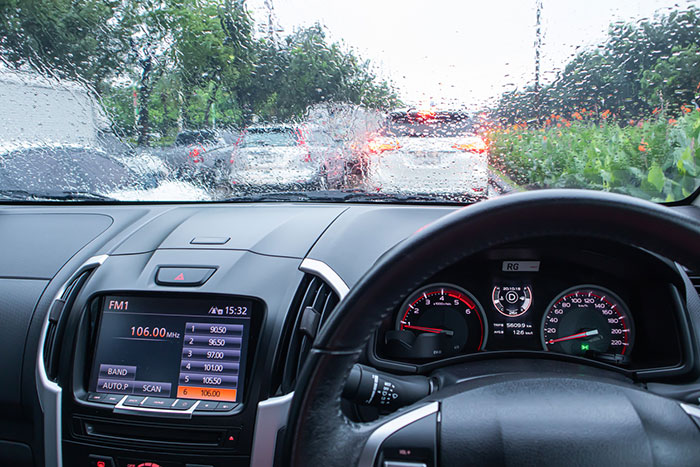
Rain and a Reliable TPMS Matter More Than You Think!
What does a wet road mean for your car’s ability to stop and how can you stay safer on the road when the heavens open up? Understanding how wet weather affects your brakes can help you drive smarter and avoid accidents in rainy conditions. We’re also going to talk about tyre pressure monitoring systems (TPMS) too, because at Safe T Tyre, we are Australia’s trusted supplier of quality TPMS devices and it’s our mission to make sure you know the importance of keeping your tyre pressure at the right level – it’s one of the easiest ways to improve your car’s wet-weather performance.
Why Wet Roads Increase Braking Distances
When hitting the brakes, tyres need friction with the road to stop the vehicle. On dry roads, friction is solid but when a layer of water covers the road, tyres have to work much harder to grip the surface.
On average, braking distances in wet weather increase by 30–50%, depending on your speed, tyre condition and road surface. At 60 km/h, your car could take an additional 10 to 20 metres to come to a complete stop on a wet road versus a dry one. If your tyres aren’t in great shape or your tyre pressure is off, that number can skyrocket further.
The Hydroplaning Hazard
Wet roads bring the risk of hydroplaning, where tyres ride on top of the water instead of making contact with the road. It’s like a car is skating except you’re not in control. Hydroplaning can happen at speeds as low as 55 km/h if tyres are bald or underinflated.
Once hydroplaning starts, you lose traction, steering control and braking power. This is where a tyre pressure monitoring system comes into action.
How TPMS Helps
Your tyres are the only part of your car that actually touches the road so it’s essential to keep them in good condition. A TPMS constantly monitors the inflation of your tyres and alerts you when your pressure drops below safe levels.
This is vital in wet conditions, because:
Underinflated tyres increase stopping distances and reduce grip.
Overinflated tyres can wear unevenly and also decrease traction.
Correctly inflated tyres maximise contact with the road, improving the chance of stopping safely.
Other Factors That Affect Braking in Wet Weather
Tyre Tread Depth
Bald tyres don’t channel water properly, increasing the risk of hydroplaning so always aim for at least 3mm of tread, or even more if you live in an area prone to lots of rain.
Driving Speed
It may sound obvious but the faster you go, the longer it takes to stop. When roads are wet, slowing down could really help you reduce the risk of an accident.
Vehicle Load
A heavily loaded vehicle takes longer to stop so if you’re carrying passengers, heavy cargo or towing a trailer, give yourself even more braking space in wet conditions.
Wet roads are part of life especially in the southern states where seasonal storms are common. Wet weather driving doesn’t have to be dangerous, if you look after your tyres, and rely on devices like tyre pressure monitoring systems, you can remain safe and in control, regardless of the weather conditions.
For a reliable TPMS reach out to the team at Safe T Tyre today. Shop online for direct TPMS or call 1800 499 383 to speak our friendly TPMS experts.

